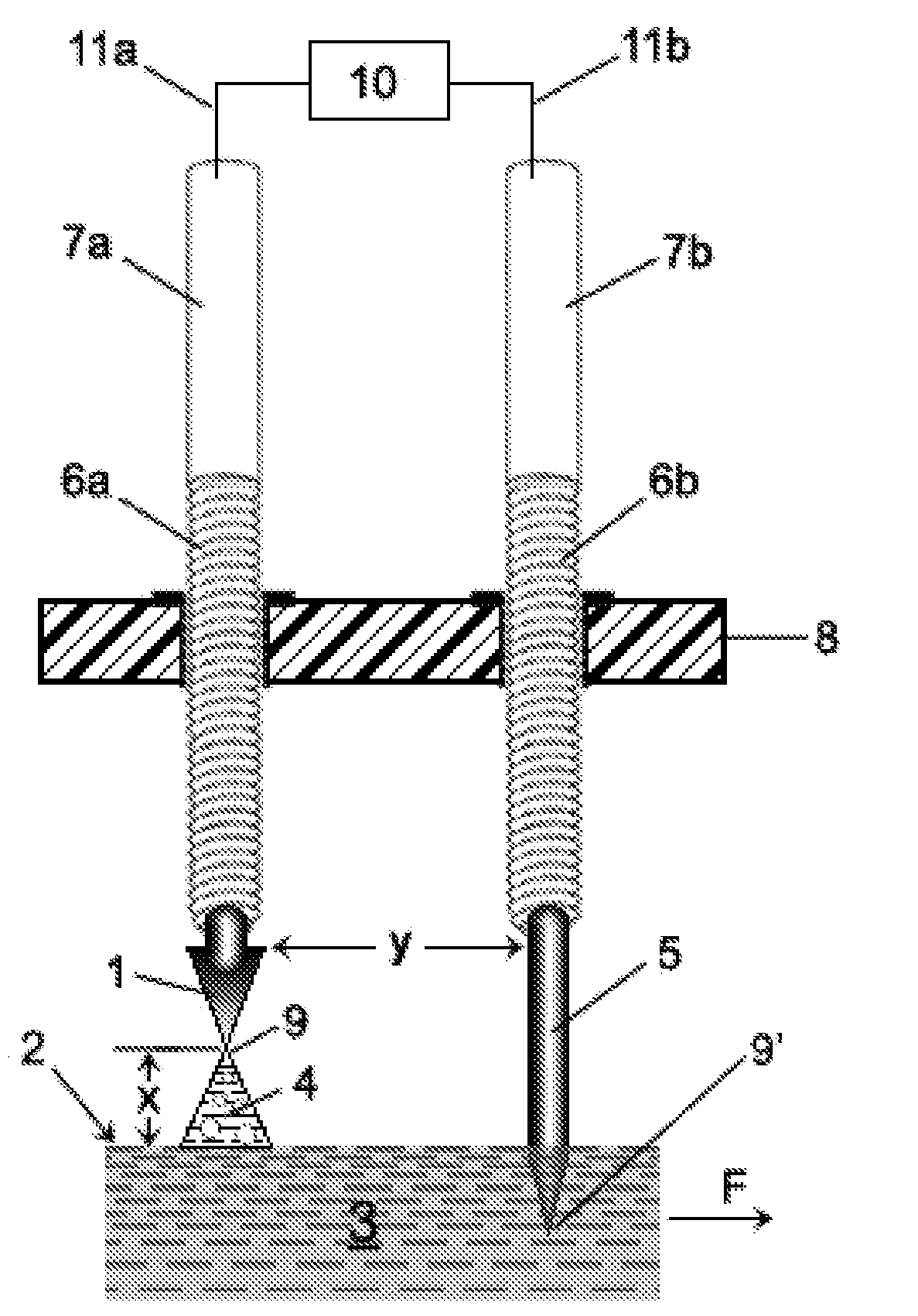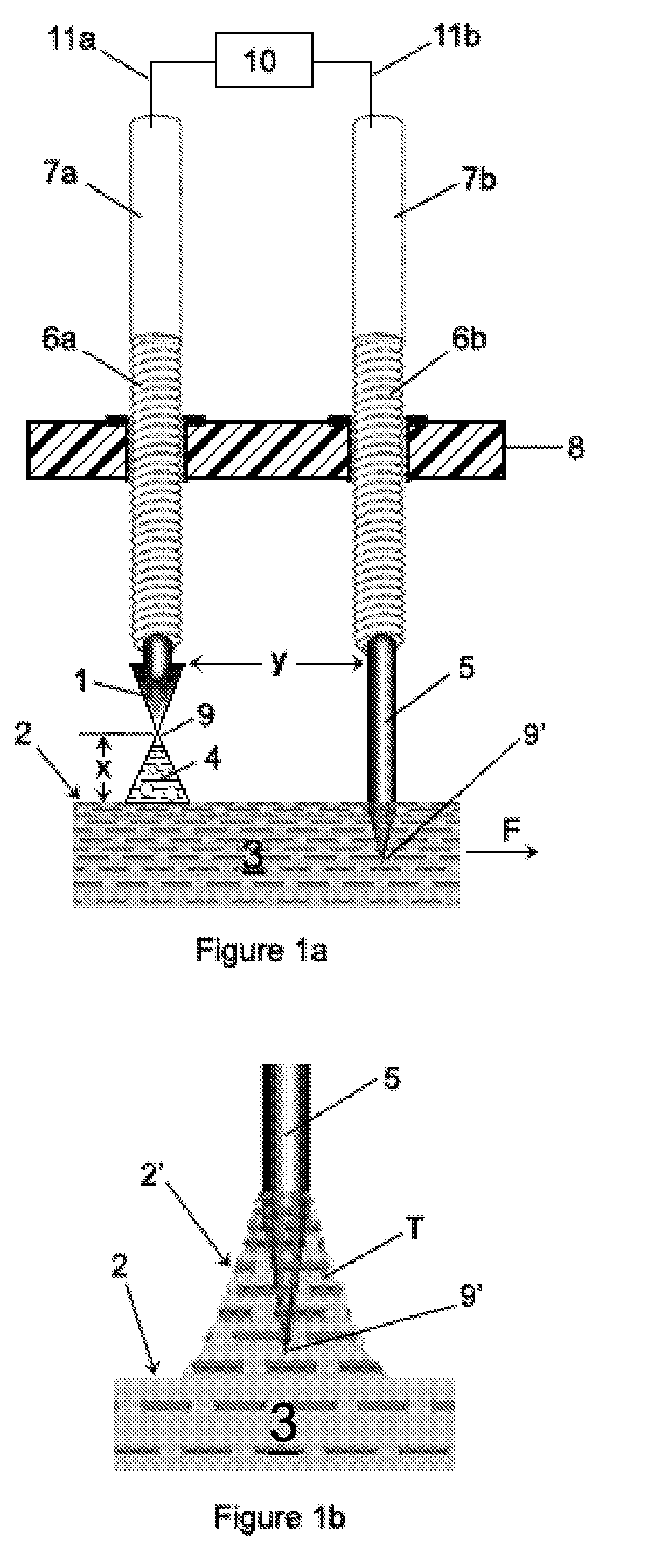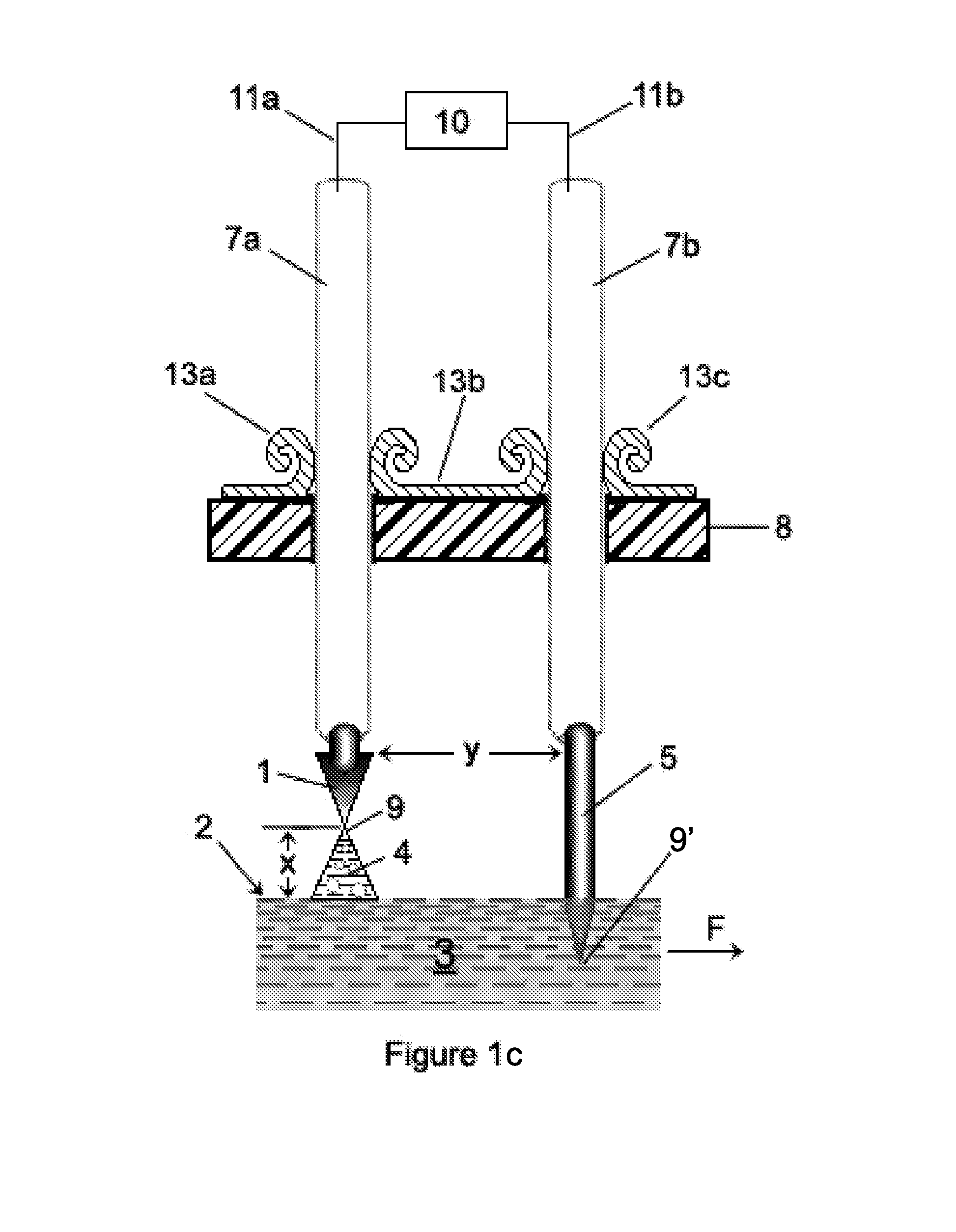Novel Gold-Based Nanocrystals for Medical Treatments and Electrochemical Manufacturing Processes Therefor
- Summary
- Abstract
- Description
- Claims
- Application Information
AI Technical Summary
Benefits of technology
Problems solved by technology
Method used
Image
Examples
examples 1-4
Manufacturing Gold-Based Nanoparticles / Nanoparticle Solutions GT032, GT031, GT019 and GT033
[0503]In general, each of Examples 1-4 utilizes certain embodiments of the invention associated with the apparatuses generally shown in FIGS. 16b, 16c and 16g. Specific differences in processing and apparatus will be apparent in each Example. The trough member 30 was made from plexiglass, all of which had a thickness of about 3 mm-4 mm (about ⅛″). The support structure 34 was also made from plexiglass which was about ¼″ thick (about 6-7 mm thick). The cross-sectional shape of the trough member 30 corresponds to that shape shown in FIG. 10b (i.e., a truncated “V”). The base portion “R” of the truncated “V” measured about 0.5″ (about 1 cm), and each side portion “S”, “S” measured about 1.5″ (about 3.75 cm). The distance “M” separating the side portions “S”, “S′” of the V-shaped trough member 30 was about 2¼″-2 5 / 16″ (about 5.9 cm) (measured from inside to inside). The thickness of each portion a...
example 1
[0527]GT032: The input water 3 into the trough member 30 was chilled in a refrigerator unit until it reached a temperature of about 2° C. and was then pumped into the trough member 30;
example 2
[0528]GT031: A processing enhancer was added to the input water 3 prior to the water 3 being input into the trough member 30. Specifically, about 0.145 grams / gallon (i.e., about 38.3 mg / liter) of sodium hydrogen carbonate (“soda”), having a chemical formula of NaHCO3, was added to and mixed with the water 3. The soda was obtained from Alfa Aesar and the soda had a formula weight of 84.01 and a density of about 2.159 g / cm3 (i.e., stock #14707, lot D15T043).
PUM
| Property | Measurement | Unit |
|---|---|---|
| Fraction | aaaaa | aaaaa |
| Fraction | aaaaa | aaaaa |
| Fraction | aaaaa | aaaaa |
Abstract
Description
Claims
Application Information
 Login to View More
Login to View More - R&D
- Intellectual Property
- Life Sciences
- Materials
- Tech Scout
- Unparalleled Data Quality
- Higher Quality Content
- 60% Fewer Hallucinations
Browse by: Latest US Patents, China's latest patents, Technical Efficacy Thesaurus, Application Domain, Technology Topic, Popular Technical Reports.
© 2025 PatSnap. All rights reserved.Legal|Privacy policy|Modern Slavery Act Transparency Statement|Sitemap|About US| Contact US: help@patsnap.com



